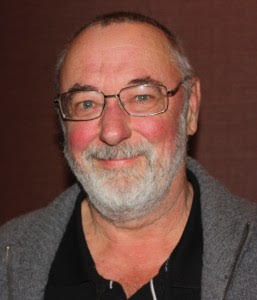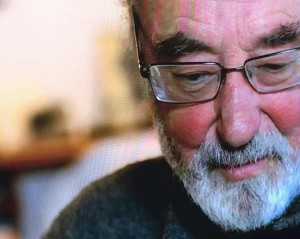(Historic) Paul LeBlond
From Loren Coleman
Paul Henri LeBlond, 81, was born in Quebec City on December 30, 1938, grew up in Quebec, received his undergraduate degree at McGill University, and then went on to doctoral graduate studies at the University of British Columbia. He worked hard and became an internationally-known ocean scientist and a famed Canadian and global cryptozoologist.
Raising a family, residing, and then retiring to Galiano Island, British Columbia, Paul LeBlond died Saturday, February 8, 2020. Paul planned his exit from his terminal ending leukemia, included goodbyes to friends, as Jenny and I were able to do via a call on Tuesday, February 4, 2020. I too was able to speak with his wife, Annette. However, natural events intervened and Paul LeBlond died peacefully at home in British Columbia, surrounded by his family.
During LeBlond’s teaching career at the University of British Columbia, where he also held joint appointments in the departments of Physics and Oceanography, LeBlond explored the dynamics of the oceans, investigating with his students the properties of wind waves, internal waves, tides, tsunamis and Rossby waves, summarized in an extensive textbook written with Lawrence Mysak in 1978. He also studied coastal and ocean wide processes in the Pacific, participating in the creation and activities of the North Pacific Marine Science Organisation, which awarded him its Wooster Award in 2004. Investigating the effect of currents on salmon migrations led him to participation in fisheries conservation issues and membership in the federal Fisheries Resource Conservation Council and its Pacific counterpart, the PFRCC. Ever curious about ocean phenomena, he also investigated sightings of unidentified marine creatures.
Paul’s research interests evolved from the “pure” physical study of phenomena such as internal waves to interdisciplinary topics. For example, from the influence of oceanographic conditions on fish migrations. his academic “branching out” culminated in his plunge into cryptozoology, the scientific investigation of legendary-beasts-demanding-respect.
Dr. LeBlond, along with colleagues such as zoologists Bernard Heuvelmans of France and George Zug of the Smithsonian, was instrumental in forming the International Society of Cryptozoology. He published in the first issue of its scholarly journal (LeBlond, P.H., 1982. An estimate of the dimensions of the Lake Champlain Monster from the length of adjacent wind waves in the Mansi photograph. Cryptozoology 1: 54-61).
Indeed, in parallel with LeBlond’s academic research and teaching in physical oceanography, he pursued his long interest in marine cryptozoology, with a special focus on Cadborosaurus. LeBlond’s work on the Naden Harbour carcass re-discovery may be research that he will forever be remembered. In 1937, a slightly digested juvenile “Caddy” measuring about 10 feet was extracted from the stomach of a sperm whale at Naden Harbour, and the photographs of it, published in Bousfield and LeBlond’s first book and a scientific journal, may be the best evidence to date of a contemporary Sea Serpent.
As one of the founders of the International Society of Cryptozoology (ISC) in 1982, LeBlond also became a co-founder of the British Columbia Scientific Cryptozoology Club (B.C.S.C.C.). Founded in 1989 by writer James A. Clark, ocean scientist Dr. Paul LeBlond and journalist John Kirk III, the B.C.S.C.C. held its first meeting in May 1989. It is also a little known fact that the word “cryptid,” which is widely-used to describe cryptozoological animals, was actually coined by long-time BCSCC Member John Wall of Manitoba, Canada (who did so via a letter to the editor of the Summer 1983 issue of the ISC Newsletter (vol. 2, no. 2, p. 10). Coauthor and friend of LeBlond’s, John Kirk is the current president of the B.C.S.C.C.
LeBlond was an active member of the B.C.S.C.C., submitting reports and thoughts to their files as his time and health allowed.
LeBlond was an emeritus professor at the University of British Columbia, a fellow of the Royal Society of Canada, a fellow of the Canadian Meteorological and Oceanographic Society, and a foreign member of the Academy of Natural Sciences of the Russian Federation. LeBlond was the author of technical scientific studies, a book on wave research, and two books on Cadborosaurus. Also LeBlond translated French books on Asian Wild Men/Sasquatch/Bigfoot, and of Heuvelmans’ book on Homo pongoides (the so-called Minnesota Iceman). The Heuvelmans’ translated book was a direct result of his collaboration work with International Cryptozoology Museum Board Member Patrick Huyghe, the publisher of Anomalist Books.
As the translator of several works, LeBlond is especially remembered for works he made available in English from Bernard Heuvelmans, Boris Porshnev, and Jean-Paul Debenat (see, for example here).
Dr. Paul LeBlond was the first president of the International Cryptozoology Society (ICS), founded by the Board of Directors and Executive Director of the International Cryptozoology Museum (ICM) in 2016. He spoke at two of the international ICS conferences (2016 and 2017), before he became too ill to travel.
When asked by Matt Bille, in 2016, of how the ICS would be different from the British Columbia Society of Cryptozoology Club, LeBlond answered: “I remember that when I launched the BC Club in 1989, I did so because I did not think that the ISC was serving the needs of the local BC cryptozoologists: too French, too academic, not field oriented. There is clearly a place for an International Society, with solid scientific standards, working in collaboration with local groups (e.g. the BCSCC and similar groups) who meet more frequently, have specific interests, conduct field work and organise casual meetings.”
Doing fieldwork researching Ogopogos, Loch Ness Monsters, Champs, and Caddys, lecturing on cryptozoology, and appearing in documentaries, Paul LeBlond pursued his lifelong passion for mystery creatures of the waters of the world.
- Mysterious World “Monsters of the Deep” (1980)
- Sightings “Monsters” (1992)
- Nova “The Beast of Loch Ness” (1998)
- Quest: Investigating Our World “How Clean Is Clean Enough?” (2002)
- Is It Real? “Monsters of the Deep” (2005)
- Alaskan Monster Hunt “Hillstranded” (2011)
- Sea Monsters: The Definitive Guide (2016)
His book credits include:
- Cadborosaurus: Survivor from the Deep (1995) co-authored with Edward L. Bousfield.
- Discovering Cadborosaurus (2015) co-authored with John Kirk III and John Walton.
- The Asian Wild Man (2015) by Jean-Paul Debenat; translator Paul H. LeBlond.
- Neanderthal: The Strange Saga of the Minnesota Iceman (2016) by Bernard Heuvelmans; translator Paul H. LeBlond; Afterword by Loren Coleman.
- Sasquatch/Bigfoot and the Mystery of the Wild Man (2015) by Jean-Paul Debenat; translator Paul LeBlond.
When Edward Lloyd Bousfield, 90, an invertebrate zoologist (born at Penticton, British Columbia, on June 19, 1926) died on September 7, 2016, it was his friend Paul LeBlond who wrote the core of the remembrance tribute here. Bousfield was best known in cryptozoology for his co-authorship with Paul LeBlond of their work on Caddy, Cadborosaurus: Survivor from the Deep.
Official Statement from the BCSCC from John Kirk III
For 30 years Dr. Paul LeBlond and I enjoyed a terrific friendship and collaboration as founders of the British Columbia Scientific Cryptoozology Club (BCSCC).
Paul passed away today after courageously enduring the debilitating effects of leukemia. It was tough on a man who was the epitome of energy and verve.
He influenced and inspired so many by making science fun.
When we started the BCSCC we could have made it a society, but we wanted it to be dynamic and less dry than most scientific groups. The formula worked and 31 years later, the club is still going strong.
Paul was a font of wisdom and knowledge and at the same time he had wicked sense of humour which often led to laughs over a bottle of wine.
We used to have our club executive meetings in his quaint back garden on Vancouver’s west side and the unorthodox style of the BCSCC arose from our revelling in this creatively charged venue.
We would travel together to places like Victoria and Kelowns to make presentations at venues such as the Provincial Museum of British Columbia and the University of British Columbia Okanagan campus.
Paul was a huge believer in challenging academia to take a look at cryptozoology as a viable pursuit.
I remember well when we invited David George Gordon, author of the Field Guide to the Sasquatch, to speak at the UBC Faculty Club. The tenured professors were totally bemused by the sight of sasquatch enthusiasts invading the august club.
Among those who came was a BCSCC member who was working in anonymity back in those days.
That fellow was John Bindernagel who emerged from the Gordon presentation ready to explore the subject with even more passion.
Paul had introduced John to the greater cryptozoological world and we all know how successfully that panned out.
The great thing about Paul was his willingness to introduce cryptozoology to any audience.
One day he would speak to the residents of an old folks home and the next moment he would be enthralling an audience at the prestigious Vancouver Aquarium.
Nobody dared to close their doors to Paul’s scientific approach to cryptozoology.
Even when his health declined Paul continued to be involved in engaging the public in the study of cryptids.
He and our co-author Jason Walton put on a Cadborosaurus display at the Caddy Festival at Cadboro Bay in Victoria last July, mere months before his passing. Still enthusiastic and energetic despite his difficult illness.
Paul and I stood together through some hard times, none as painful as the sudden passing of Jim Clark, our fellow founder of the BCSCC.
It is devastating when a 29 year old goes before you do.
Paul eulogized Jim at his memorial and really captured the essence of who Jim was.
Today I do the same for Paul.
I hope that you have been given an insight into the magnificent life of Paul LeBlond, gentleman and scholar.
Today we mourn Paul with his wife Annette, his children Michel, Anne, Philippe, and his step-daughter Jenny.
Farewell Paul, your legacy will live on through the lives of those you affected and in the work of the BCSCC.

